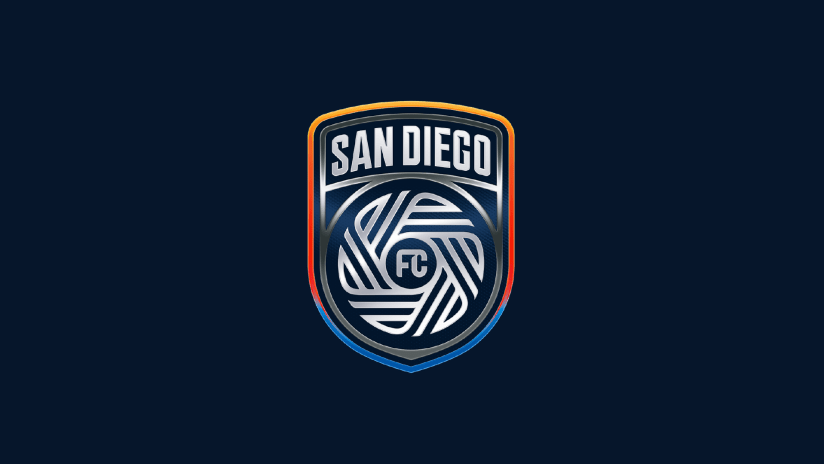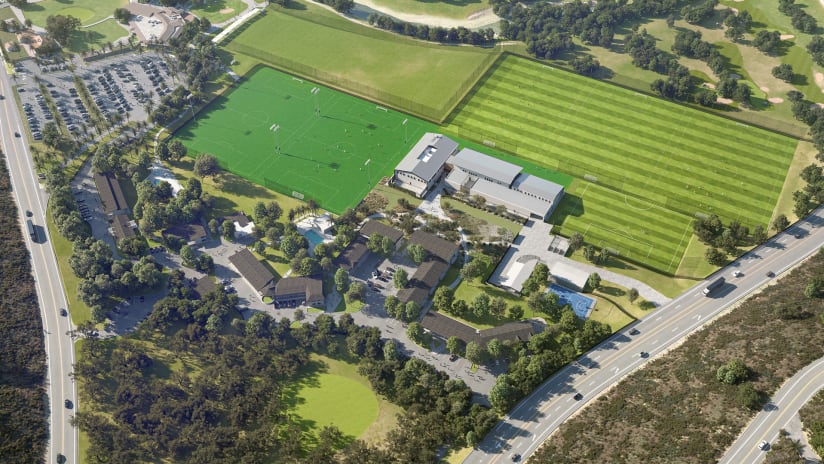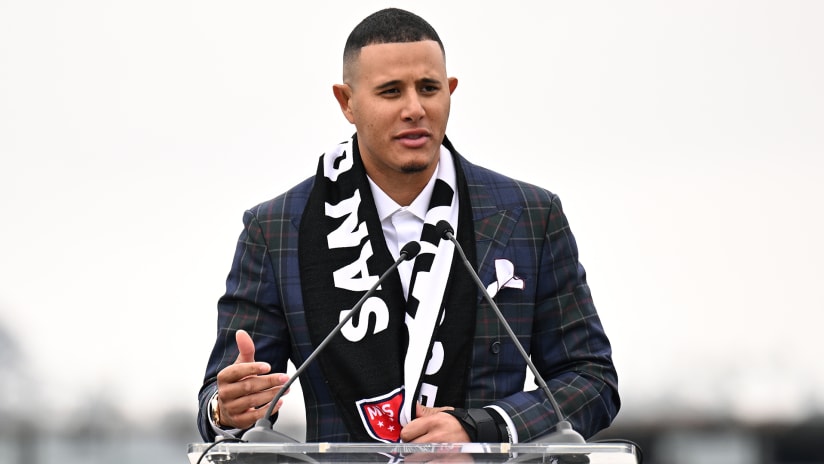SAN ANTONIO — THIS STORY OF SOCCER DREAMS begins quite literally on a giant pile of rocks.
It’s on this site, a sleepy patch of dust on the far northeastern edge of town, where the future lies. It’s here, where as recently as eight years ago, a long-abandoned quarry was rusting out and blending in with the South Texas landscape.
But in just the past half-decade, soccer has been a big hit on this previously forgotten patch of land. And it’s where the city of San Antonio believes it’s got a bona fide path to Major League Soccer at long last.
Over and over, fans in this city — the seventh-largest in America with a population of 1.4 million — have seen their town passed over as nearly a dozen new markets were granted admission into the league. They’ve stayed patient and hopeful, waiting for the right things to fall into place.
It’s been a roller-coaster ride. San Antonio has flirted with MLS many times over. In fact, the city has been mentioned on a short list of candidates since the day the league opened up shop 20 years ago. The prospect of joining has been central to three mayoral campaigns, and exploited as a pawn in countless political games. A local entrepreneur almost got it done on his own, but in the end, didn’t have the resources or the national reach to get it over the finish line.
Hope begins anew in 2016 thanks to the involvement of the biggest game in town.
Sitting on the sidelines the entire time has been the San Antonio Spurs, five-time NBA champions widely cited as one of the top organizations in all of North American sports. At various points over the past two decades, they had considered adding pro soccer to their sports monopoly in the Alamo City – a portfolio of minor-league hoops, hockey and lacrosse teams in addition to the only major-league franchise in town.
Then in December, Spurs Sports & Entertainment swung a deal with the city of San Antonio and Bexar County that finally put it in the soccer business: It would start a USL franchise with the express intent of entry to MLS within the next six years. If unsuccessful, SS&E would owe a substantial penalty to the city and county.
“The only reason we did this deal was to get to MLS,” says Bexar County Judge Nelson Wolff, who gave the ultimate sign-off. “There was no other reason.”
SS&E’s involvement is seen by many in San Antonio’s soccer community as the final piece of the puzzle. The organization has put its reputation and resources on the line to join MLS. And thus begins the story of San Antonio FC, a brand-new USL club that kicked off its inaugural season two weeks ago — barely three months after starting almost completely from scratch.
The most powerful statement of the Spurs’ intent you’re likely to see is a subtle one: a familiar-looking silver spur on the club’s crest. It’s a reminder of the power of the institution pulling the strings.
“They’re highly regarded as a top organization in sports, and they’re the envy not just of San Antonio, but all of Texas and even nationally,” says Mike Macias, founder of local supporters club The Crocketteers. “You’re telling me that with that sort of involvement, [MLS Commissioner] Don Garber & Co. would say, ‘We don’t have space at table for you?’ I can’t believe that would be the case.”
Whether the feeling is mutual remains to be seen, but MLS is certainly paying attention. Garber said at an event in Sacramento this past week that the league is looking at the city for its next round of expansion among a list that includes St. Louis, Sacramento, San Diego, Austin and Detroit.
Still, there’s never been this much momentum here.
To understand how we got to this point, you have to go back to that pile of rocks…

A record crowd of 8,466 watched San Antonio FC draw 1-1 against Swope Park Rangers, Sporting KC's USL affiliate, on Saturday in the club's first-ever home game. SAFC joined USL as expansion side for 2016 and have expressed their desire to make the move to MLS in the future. Photo via Darren Abate/San Antonio FC
IF YOU'VE BEEN FOLLOWING SOCCER in North America in recent years, you probably know a little bit about the San Antonio Scorpions. You might know they briefly took San Antonio by storm, won a league championship and set some attendance records during their four seasons in the NASL. You might have heard they were trying to court the eyes of MLS’ decision-makers from the get-go.
What you probably don’t know is that was never going to happen. At least not in the way they were structured. But without their influence on soccer in San Antonio, there’s no way SAFC would be in the position they’re in now.
San Antonio has a long history of involvement in the beautiful game, even though it may be a bit disorganized. Records of the sport being played here go back as far as the 1910s, and a steady Mexican influence has always kept soccer healthy in the Alamo City. The original NASL had a brief foray here in the 1970s, and a handful of amateur clubs have risen and fallen since then. Today, five Greater San Antonio colleges have men’s and women’s programs while some two dozen youth clubs are in operation.
That may not equate to the other Texas megaplexes of Dallas and Houston, both of which have metro areas that dwarf San Antonio’s and have been hotbeds of youth development for years. Each of those cities also sport an MLS franchise. But the gap has been closing.
What’s been missing — other than the San Antonio Thunder’s two seasons in the NASL in the mid-1970s — has been a top-flight team. There was intent during the mid-2000s, when there was mutual interest between the city and MLS. But a deal never got done thanks to political jockeying. Instead, it took a totally outside-the-box gamble by a man who simply wanted to give kids something to do.
Gordon Hartman is a local businessman who made his wealth building residential properties around Greater San Antonio. A decade ago, he had a vision for what he wanted to do with his fortune: He would build a youth soccer facility, as well as an amusement park for kids with special needs (Hartman’s daughter, Morgan, was born with cognitive disabilities).
So he bought a huge plot of land in a mostly undeveloped area 12 miles northeast of downtown, on the site of the former Longhorn Quarry, a cement-making facility that had stood abandoned since the 1980s.
“He took me up on the hill [overlooking the facility] and said, ‘We’re going to put 14 fields and a stadium here,’” recalls Paul McGinley, who has lived in San Antonio and served as head coach of Trinity University’s men’s soccer team since 1991. “I looked at him kind of funny and said, ‘Really? Fourteen fields and a stadium? Here?’”
Hartman wasn’t looking to profit from the project. He didn’t know much about soccer, either. He just felt that starting a pro team was the right thing to do to give back to the community. Ground was broken on the complex in 2008, and Hartman presented a model for a professional club to the NASL in which all the proceeds from the club would go to Morgan’s Wonderland, the amusement park he would build adjacent to a soccer-specific stadium.
“I always believed that the game of soccer [was] very popular in San Antonio but that it was not being pursued to move it forward,” Hartman explains. “I felt making the investment of bringing a pro soccer team to San Antonio, coupled with a 75-acre youth practice soccer facility and state-of-the-art stadium, would turn this around.”
He proved to be prophetic. The Scorpions’ debut home game in 2012 drew more than 13,000 fans to a high-school football stadium adjacent to the construction site. They went on to average more than 9,000 in their inaugural campaign and finished atop the regular-season NASL standings.
The faces were familiar ones to American soccer fans. Former San Jose and Real Salt Lake striker Pablo Campos led the team in scoring with 20 goals, and won the league’s Golden Boot title. The Scorpions got solid contributions from a handful of former MLSers that included Ryan Cochrane, Kevin Harmse and, for a brief spell, one-time MLS goal king Jeff Cunningham. Roaming the sidelines was former Tampa Bay and Colorado head coach Tim Hankinson.
“It was fun to watch happen,” recalls SS&E vice president Bobby Perez, who was a season-ticket holder. “It really was great for the community.”
In 2013, the Scorpions opened their permanent home, Toyota Field. As constructed, it has a capacity of 8,300 but was engineered much like Toronto’s BMO Field for expansion in two phases. The final phase features designs that could expand the facility to hold as many as 18,000, potentially for international matches, college tournaments or, eventually, an MLS team.
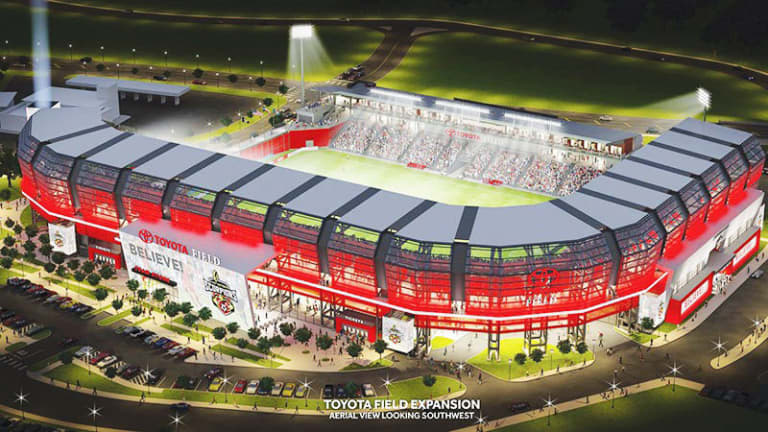
This rendering shows the San Antonio Scorpions' vision of what an expanded Toyota Field could look like in the case of MLS expansion. The Scorpions ceased operations after the 2015 season. Spurs Sports & Entertainment started a USL team in December that plays at the venue and shares the city's MLS aspirations. Photo via San Antonio Scorpions
Aesthetically, it’s a jewel of a stadium. The metallic industrial design matches the ruddy surroundings but still feels fresh enough to be state-of-the-art. There are dedicated supporters’ sections, a beer garden, 16 suites and a modern press box, giving it the feel of an MLS stadium in miniature.
On the field, the Scorpions did their part. Halfway through a disappointing sophomore campaign, the club replaced Hankinson with Canadian coach Alen Marcina, who led the team to an NASL championship the following season. The club became a soft landing spot for former MLSers looking to stay in the North America, such as Omar Cummings, Marvin Chávez and Eric Hassli. Meanwhile, it cultivated new stars and fan favorites like swashbuckling Colombian attacking midfielder Rafa Castillo and backup goalkeeper Matt Cardone, a San Antonio native and Trinity University alum.
Off the field, the experience seemed to be getting further away from bigger aspirations. In late 2012, the Scorpions handed their business operations to Howard Cornfield, a Brooklyn native who was coming off a successful stint managing a minor-league hockey team in Iowa.
What worked in an arena environment wasn’t necessarily best for soccer. Promotions became a constant backdrop to the game itself. As the action progressed on the pitch, live shots of club ambassadors giving away prizes to fans were regular sights on the video board. Corner kicks and free kicks were “brought to you” by sponsors. The public address system even blared taped chants of the not-so-soccer-specific “De-fense! De-fense!”
“I kept waiting for the kiss cam,” jokes Lee Ochoa, co-founder of supporters club Mission City Firm. “I kept wondering, are we just in a big commercial?”
Adds Macias: “The last couple seasons felt very minor league. There were traveling fans from places like Minnesota — really soccer-savvy fans — and those guys really honed in on some of these things. They left thinking, ‘This is how it works in San Antonio.’ That’s not how we wanted to portray ourselves.”
Hartman didn’t disagree. While the Scorpions were a huge boon for his nonprofit, he was beginning to realize he had taken the club as far as he could, and theorized that, at some point, he was going to have to make a handoff to an organization that could take it further.
“My passion is assisting special-needs [kids], not being the owner of a pro soccer team,” he says. “We had succeeded what we set out to do and now it was time for others to move it forward.”
Turns out, the Spurs agreed. They had watched a steady stream of new markets such as Seattle, Philadelphia, Portland, Vancouver, Montreal, Orlando, Atlanta and Minnesota march into MLS. And although each ticked off the league’s “three pillar” criteria — ownership group, stadium solution and fan base — each had unique circumstances. There was, Perez observes, no longer a “one-size-fits-all” solution to gaining entry.
Midway through 2015, SS&E began earnest discussions with Hartman, as well as the city and county, about picking up the baton. The timing started to feel right. The local government was more eager to step up than ever, thanks in part to an independent study done in 2011 that suggested San Antonio’s best fit for a new professional sports franchise wasn’t the NFL — which it had been chasing for upwards of two decades — but MLS, which matched the shifting demographics of the area and put it into conversations about the future of the city.
The negotiations took several months to coalesce. What emerged was a complicated three-way deal announced in December that saw the following: 1) Hartman would cease operations of the Scorpions and sell Toyota Field and his youth-soccer complex to the city of San Antonio and Bexar County for $18 million; 2) Spurs Sports & Entertainment agreed to a 20-year lease to run all operations at Toyota Field and would donate $3 million to Morgan’s Wonderland; 3) SS&E would start a USL club to begin play in 2016.
The one catch? They would gain entry into MLS by 2022, or start incurring penalties to the city and county. Naturally, time was of the essence. SS&E opted to begin fielding a club immediately.
“I wish we could’ve gotten it done [last] July,” says Perez, who was a key part of the deal. “It wasn’t an uncomplicated transaction. We did consider holding off until 2017. But at the end of the day, we thought we could do it. So we did.”
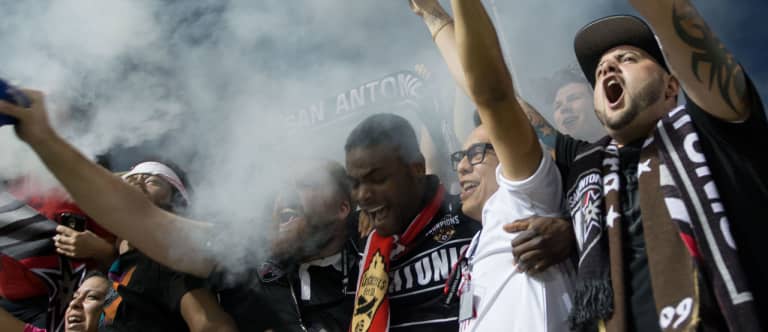
San Antonio FC supporters celebrate Danny Garcia's game-tying goal against Swope Park Rangers in the club's first-ever home match at Toyota Field. Photo via Darren Abate/San Antonio FC
YOU'VE GOT THREE MONTHS to build a soccer club in a major metropolitan area. Where do you start?
There are three major boxes to tick: finding a place to play, establishing the soccer side and building the fan base.
If it’s a lower-division operation, maybe the pressure isn’t that intense. You put together a good product, but with mild benchmarks for success. That wasn’t going to work in San Antonio, where the Spurs were aiming to build something that could easily scale up to MLS.
Luckily, Box 1 was checked. Toyota Field has proven it’s more than adequate and has the ability to scale up if and when the need comes. And even though it’s not in the city’s urban core, club officials are quick to point out that neither is AT&T Center which, according to ESPN, has been at 99.3 percent capacity this season as the Spurs cruised to their 11th division title in 16 years. Additionally, they say, Toyota Field’s suburban location is ideal for attracting fans from the Austin area, just an hour north up Interstate 35 and home to another 1.25 million.
Boxes 2 and 3 are a little loftier. SS&E had been doing its homework for years, starting with regular discussions with Hartman about his goals for the Scorpions. It had been meeting with city and county officials to gauge how it could make soccer work and how to get civic support. It had been consulting with both the NASL and USL, learning about the soccer business and how a second- or third-division team could eventually make the jump.
During the course of 2015, the organization really did its due diligence. SS&E execs Perez and Rich Pych made deep dives on several American pro soccer teams, trying to learn lessons from the ones that seemed to offer the most insight on San Antonio’s opportunity.
There were the big ones: Talks with FC Dallas and the Houston Dynamo yielded lessons on how MLS met separate challenges in Texas. There were the less obvious ones: Conversations with USL club Arizona United SC proved that even in similarly sprawling metropolitan areas, there isn’t always a right formula.
Then there were the spiritual cousins. For all the talk of San Antonio’s large population, its metropolitan size is about 2.3 million, ranking it 25th-largest in the US and more in line with the Orlandos and Sacramentos of the landscape. Both Orlando City SC and Sacramento Republic FC forced their way into MLS conversations by building robust on-field products that looked more like top-level clubs and lining up local support from ownership down to growing fan bases that defied their small-market status.
There is some irony in the fact that Orlando perhaps served as the perfect analog. The club left its original home of Austin behind, feeling its odds of reaching MLS were better in Central Florida. But the speed at which it scaled its USL operation into a full-scale professional soccer club was one-half of the formula toward getting the MLS nod. The astounding rate at which it mobilized its market into diehard supporters was the other.
“They weren’t building their club just to play in the USL,” says Perez. “They had eyes on bigger things from the beginning. We saw a lot of potential similarities.”
The Spurs admired them so much, in fact, that they made their two most significant soccer hires directly from the Orlando City organization: head coach Darren Powell, who was serving as the club’s academy director, and managing director Tim Holt, who was a vice president in charge of building out the club’s USL affiliate and its NWSL team.
Powell had a long history in the college ranks, and found most of his success at Elon University from 2005-2014. In Orlando, he was tasked with developing youth players into potential Homegrown products for the Lions’ first team. He had a reputation as builder, a mentor and the ability to sell a vision.
“When coach Powell took charge of the Elon men’s soccer program, no one envisioned consistent top 25 finishes, consecutive conference championships and tournament wins,” wrote Toronto FC goalkeeper Clint Irwin, perhaps Elon’s most accomplished alum, in a 2014 blog post. “And he did it playing an attractive style of soccer that made his players better. He didn’t take short cuts, didn’t stack his team with international players or play territorial soccer, all of which can buy you short-term success…”
That was the approach around which Powell built his first SAFC roster despite a three-month turnaround. The England native jokes his cell phone bill has reached near record fees given how many conversations he had within his network to attract players.
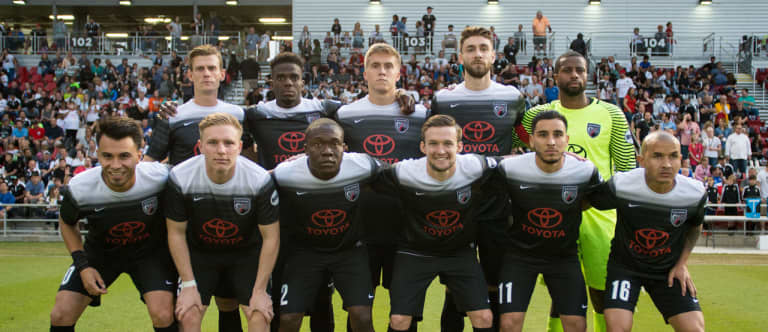
The San Antonio FC starting XI poses for a photo ahead of their first-ever home match on April 9. The lineup included MLS veterans Carlos Alvarez, Josh Ford, Stephen McCarthy, Jason Johnson and Greg Cochrane. Former FC Dallas Homegrown Player Danny Garcia scored the game-tying goal in a 1-1 draw with Swope Park Rangers. Photo via Darren Abate/San Antonio FC
He called people close to home like Josh Ford, a journeyman backup ’keeper originally drafted by the Seattle Sounders who spent 2015 with Orlando City. He called former New England defender Stephen McCarthy, whom Powell knew from the center back’s college days at North Carolina. He used his connections to bring in Carlos Alvarez and Jason Johnson, promising attackers who never found the right fit in MLS. And he talked Scorpions incumbents Castillo, Cardone and Honduran defender Milton Palacios into sticking around.
Hardly anyone turned him down. Every current SAFC player with whom MLSsoccer.com spoke cited Powell’s passion as the reason they came on board. Powell just laughs and explains his magic pitch thusly:
“I told them, ‘This is an opportunity for you to be in a project from Day 1 and we can build something special together. It’s bigger than any of us. Look at the Spurs and what they stand for. How many players in their career can say they were in the first first team?”
He treaded lightly on the MLS future. It was there, of course, but with no guarantees. But he did keep one piece of flavor in his back pocket: “I liken it a bit to Manchester United maybe starting a basketball team.”
In the background, Powell was also charged with building out the club’s academy structure. He’s starting small, setting up the U-12 level first and hoping that the club’s six-year target for MLS will blend naturally with homegrown players coming of age at a time when there is a clear end point.
Holt was perhaps the more telling hire. He had worked in the USL league office for 16 years, and served as president for six of its most prolific that included the organization’s biggest boom time: expansion to nearly 30 teams, and in establishing the affiliate system with MLS that exists today.
Holt had actually been involved in those early discussions between the USL and the Spurs, and knew their officials fairly well. They had even consulted him a bit while he was in Orlando. In the end, he fell for their pitch much in the same way the players fell for Powell’s.
“I wasn’t going to let anyone else do this instead of me if I got the opportunity,” Holt explains. “To me, there wasn’t a better club than Orlando City in terms of the business model and the people involved. I had to think about that a lot. But there were so many similarities here, I knew it was going to turn into something.”
Backed by the huge brand name of the Spurs as well as SS&E’s infrastructure, Holt is building the club from the ground up. He’s hired 23 front-office staffers, from ticketing pros to marketers to PR. He’s focused on making the game-day experience feel more authentic and less like a side show. And he’s begun to wrap his arms around the challenge of trying to grow the fan base beyond the core Scorpions supporters.
In short, he’s giving SS&E immediate credibility in architecting a soccer club. While the Spurs brand will grab the attention, it’s up to Holt to make sure the product SAFC deliver is something separate, unique and valuable to San Antonio.
“With Tim in place, he’s widened the scope so much more,” says Perez. “He’s got the USL experience, obviously, and the Orlando experience. He can pick up the phone and get questions answered in minutes. That was important to us.”
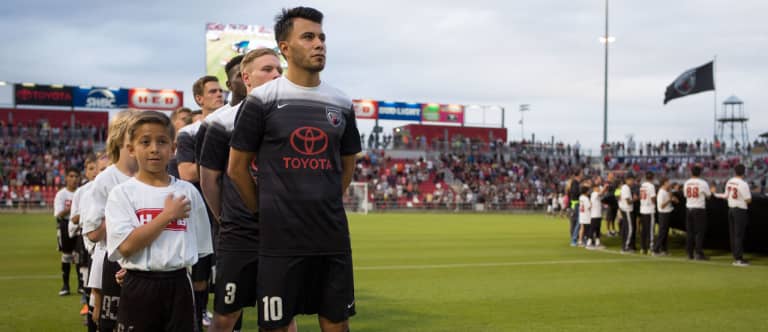
Former Chivas USA and Colorado Rapids midfielder Carlos Alvarez stands at attention during the national anthem at SAFC's home opener on April 9. Head coach Darren Powell tapped into his extensive network to build a roster in a matter of months. Photo via Darren Abate/San Antonio FC
Last weekend, it all came together in a big way. SAFC made their home debut in front a record, standing room-only crowd at Toyota Field. The place went nuts when former FC Dallas Homegrown Player Danny Garcia chipped the Swope Park Rangers ’keeper in the 42nd minute, canceling out a second-minute strike by the visitors. While the 1-1 draw didn’t exactly make for a storybook ending, the near-8,500 on hand got the show they wanted. For the handful of community leaders in attendance, it was further evidence they were onto something.
“We’re joining the world with soccer and the growth of this sport is evolving in San Antonio,” Wolff told the club’s official website after the match. “Hopefully with trying to get Major League Soccer here in the future, you see the excitement growing.”
So back to the question at hand: Will this work? Will the Spurs’ involvement finally push San Antonio over the line?
There are still way too many variables to answer that question today. SAFC must prove they can captivate a sometimes sleepy sports landscape. They need to show they can connect with the community in a way far more profound than the Scorpions ever did, including figuring out a way to access the majority Latino population, many of whom live on the opposite side of town. They might need to prove they can deliver on attracting fans from Austin, where the sporting mindset and lifestyle is vastly different than San Antonio’s.
But in these early days, signs are good.
“I’ve heard people [around San Antonio] talking about SAFC more in the past couple months than in four years combined of the previous organization,” says Ochoa. “There’s just a buzz that hasn’t been here, not even at the beginning with the Scorpions.”
Years from now, if an MLS team is winning over soccer fans in San Antonio, maybe they won’t look back at old Longhorn Quarry as a giant pile of rocks. Maybe they’ll see it as a foundation.
THE WORD is MLSsoccer.com's regular long-form series focusing on the biggest topics and most intriguing personalities in North American soccer.

